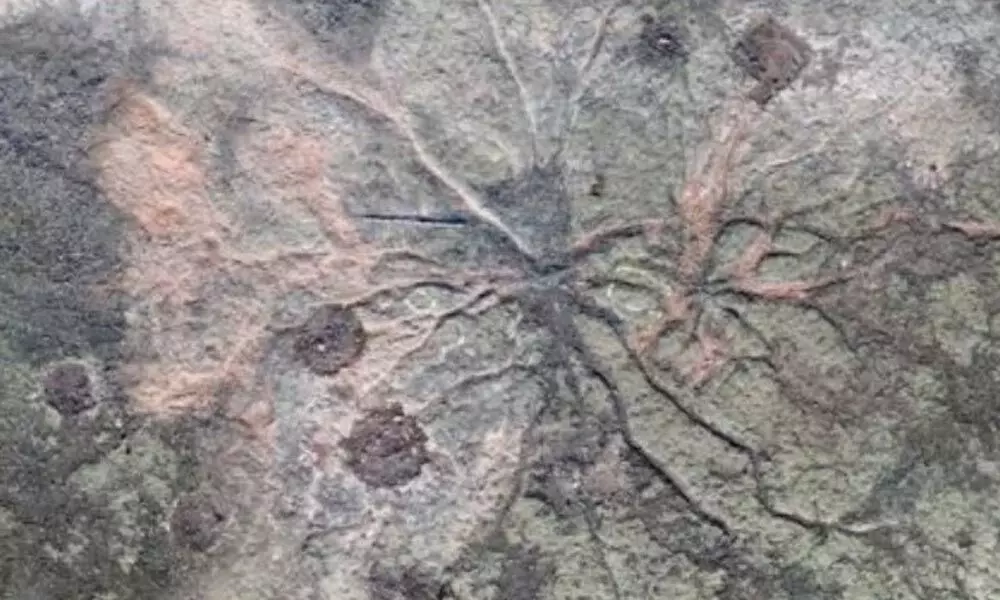Live
- They always want me to win, and now I feel lucky to have been offered a story like ‘Zebra’: Satyadev Kancharana
- ‘Democracy first, humanity first’: PM Modi in Guyana's parliament on two countries' similarities
- PKL Season 11: Telugu Titans register third straight win to top standings
- Is Pollution Contributing to Your COPD?
- NASA Unveils Underwater Robots for Exploring Jupiter's Moons
- Additional Central forces arrive in violence-hit Manipur
- AR Rahman and Saira Banu’s Divorce: Legal Insights into Common Issues in Bollywood Marriages
- 82.7 pc work completed in HPCL Rajasthan Refinery area: official
- Curfew relaxation extended in 5 Manipur districts on Friday
- Tab scam prompts Bengal govt to adopt caution over fund disbursement
Just In
Scientists Revealed The Old Forest's Appearances By Reconstructing It's Remains

Hans News Service | 11 Sept 2021 3:06 PM IST

x
Scientists Revealed The Old Forest's Appearances (Photo/sciencealert)
Highlights
- Scientists are rethinking about the world's first forests could have appeared like according to the fossilised web of a 385-million-year-old root structure.
- Some of the first tree want tobes would have resembled giant stalks of celery, shooting 10 metres (32 ft) into the sky.
Scientists are rethinking what the world's first forests could have appeared like according to the fossilised web of a 385-million-year-old root structure.
They have painted a vision that is diametrically opposed to what presently stands in its stead. Under an old highway department quarry near the little town of Cairo in upstate New York, scientists have reconstructed the remains of what was once a massive and mature old-growth forest home to at least three of the world's earliest tree-like species.
Some of the first tree want tobes would have resembled giant stalks of celery, shooting 10 metres (32 ft) into the sky. Others had hairy, fern-like fronds for leaves, similar to pine trees. With a bulbous base and a canopy of fern-like branches, the third long-lost plant would have followed the palm tree.
Despite the fact that dry periods were a frequent part of the cycle, the Cairo forest, which followed the Catskill river, appeared to be home to primitive trees that we formerly thought could only thrive in swamps or river deltas. The genus Eospermatopteris produces these tree-like plants that resemble towering ferns on bulbous stumps. Asthese towering plants have shallow roots that do not branch, they are unlikely to thrive in drier environments, therefore their existence in Cairo's old floodplains is puzzling.
Eospermatopteris trees were previously exclusively found in moist lowland environments, such as the prehistoric site of Gilboa, also in New York state.
The Cairo site, in contrast to Gilboa's homogeneous marshes, is 2 to 3 million years older and has a much more diversified topography. It was formerly made up of an abandoned waterway with banks, as well as a small depression that was only filled with water during specific seasons, according to researchers.
Despite this, Eospermatopteris trees appeared to have thrived here for over 16,000 years. According to researchers, their roots had adapted to semi-arid circumstances as well as the risk of short-term inundation.
Researchers discovered deeper root systems from extinct pine tree-like plants belonging to the Archaeopteris genus at the Cairo site. These trees are more evolved than Eospermatopteris trees, with woodier branches and real leaves that can photosynthesize, as well as deeper roots that can stretch 11 metres wide and 7 metres deep (23 feet).
These characteristics were supposed to be what allowed primordial fern-like trees to break away from lowland swamps hundreds of millions of years ago, eventually making their way onto drier places such as floodplains, where the water table can rise and fall.
However, the latest discoveries imply that even primitive Eospermatopteris trees, which lack genuine leaves and strong roots, could have fled the swamp in search of drier climes.
According to evolutionary ecologist Khudadad of Binghamton University in New York, this finding revealed that the earliest trees could colonise a range of settings and weren't limited to the moist environments.
Trees could endure not only drier conditions, but also the hard conditions of the vast clays that characterised the Catskill plains.
So why are Eospermatopteris trees so common in prehistoric deltas yet Archaeopteris trees so common in floodplains? Because the trees still reproduced by spores rather than seeds, they would have been more likely to establish themselves near rivers or other water sources where their genes could be spread further.
The new study's authors believe the fossil records are deceiving us. A long-term flood that waterlogged the trees and killed them is supposed to have wiped off the prehistoric Cairo forest. However, the silt that was deposited afterwards may have protected their roots in a way that is uncommon in floodplains and more prevalent in deltas.
It's probable that the fossil records were biassed towards low-lying places due to the optimal conditions required for the preservation of landscapes and species, the authors write, leading to the conclusion that Eospermatopteris were confined to deltaic habitats by their morphologies.
Meanwhile, the authors don't believe Cairo's prehistoric forest's structure is an abnormality, given its antiquity. Instead, they say that it's most likely a representation of mature woods from the historical period that haven't been preserved or identified yet.
More On

Next Story
More Stories
ADVERTISEMENT
© 2024 Hyderabad Media House Limited/The Hans India. All rights reserved. Powered by hocalwire.com






